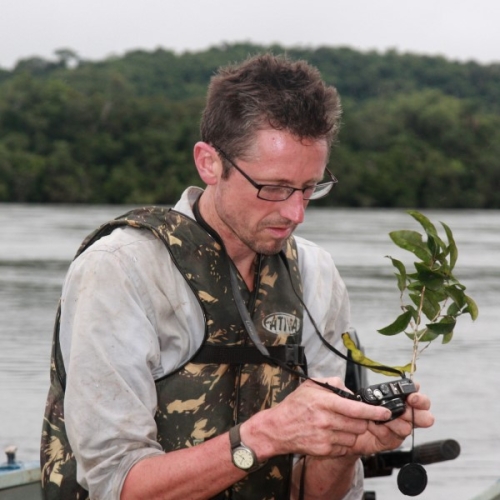The natural capital of the Amazonian rainforest
Our concrete-dominated cities inspire creative ways to integrate plants, like living roofs and urban gardens. Plants benefit our physical and mental health and are crucial for the environment. Historically, they've provided essential resources like oxygen, water, food, and construction materials.

52 plant species for the construction of houses
Amazonia and its Indigenous inhabitants provide a perfect example of how people can exploit plants sustainably. To provide shelter, for example, the Yanomami build large circular wooden dwellings, thatched with palm leaves, which house the entire community. A single large lowland roundhouse uses at least 52 plant species, including Geonoma palm leaves for thatching and house posts made from Manilkara huberi and Centrolobium paraense. These are both known by the Yanomami to be the most resistant to rot and attacks by termites – and consequently valued for their durability in the timber trade. Traditionally, the Yanomami move on from the site after a few years to allow the forest to recover.


Sustainable forest management to protect our natural resources
We are increasingly aware that the use of plant-based assets in Amazonia (and worldwide) is far from sustainable, threatening not only our natural resource supplies but the entire environment that we all inhabit. Sustainable forest management and certification schemes have made some progress towards better husbandry of the world’s forests, but the problem is a long way from being solved.
Fifty years from now the built environment will be substantially different and the land and its ecosystems and habitats will be more impacted than ever. Energy efficiency will become critically important, and renewable plant resources will play an increasingly important role in human life. As the global environment changes and species extinction increases, the need to find new, sustainable solutions to counter these processes is even more crucial than it ever was.
End illegal deforestation by 2028
In Amazonia, indigenous peoples remain the greatest protectors of the remaining forest. At the COP26 meeting in Glasgow, Brazil stated that they would cut the country’s carbon emissions by 2030, achieve net-zero by 2050 and end illegal deforestation by 2028. Nevertheless, more parts of the Amazon Forest were burned in 2021 than in the last 15 years.
Meanwhile, politicians and businesses are trying to alter the laws to make mining and development legal in indigenous reserves. Currently there are approximately 20,000 illegal goldminers in the Yanomami area, polluting the rivers with mercury, infecting local people with COVID-19, and inciting violence and, in some cases, causing deaths. Amazonia is now believed to be reaching the ‘tipping point’ after which the ecosystem may never recover. It is time to step up now, before it is too late.
Industrial sectors
- Agriculture, forestry and fishing
- Water supply; sewerage, waste management and remediation activities
- Professional, scientific and technical activities
- Public administration and defence; compulsory social security
- Activities of households as employers; undifferentiated goods- and services-producing activities of households for own use
Habitat at the New European Bauhaus Festival and the STI Forum
This story is part of “Habitat: Embracing change in the post-2030 future”. Habitat was discussed at the side event “New habitats for the post-2030 future” during the New European Bauhaus Festival on 10 June 2022. At the STI Forum of 2023, a science policy brief recommendation on Habitat was published under the category “science-policy-society interface”: Enablers for transformative change to sustain people and nature-centred world. Download recommendation >
Contribution to story
- This is “HABITAT: Embracing Change in the Post 2030 Future” Exhibition designed and curated by Dr Sandra Piesik, 3 ideas B.V in collaboration with HABITAT Coalition and VITO
- Copy editing by Katleen Vandormael, Communication Manager G-STIC, VITO
- Cover image: Aerial view of massive flooding and destruction in the aftermath of Hurricane Katrina September 1, 2005 in New Orleans, LA © FEMA, Alamy Stock Photo
- “HABITAT: Vernacular Architecture for a Changing Planet” published by Thames & Hudson
- “HABITAT: Vernacular Architecture for a Changing Planet” published by Abrams
- “Habitat: Traditionelle Bauweisen für den globalen Wandel” published by DETAIL Special
- “Habiter la planète: Atlas mondial de l'architecture vernaculaire” published by Flammarion First Prize Winner at “J’aime le livre d’art”, Paris 2017
- “HABITAT: Arquitectura vernácula para un planeta cambiante” published by Blume
- “HABITAT: Vernacular Architecture for a Changing Climate’ published by Thames & Hudson UK, USA, and Shufuhsa
